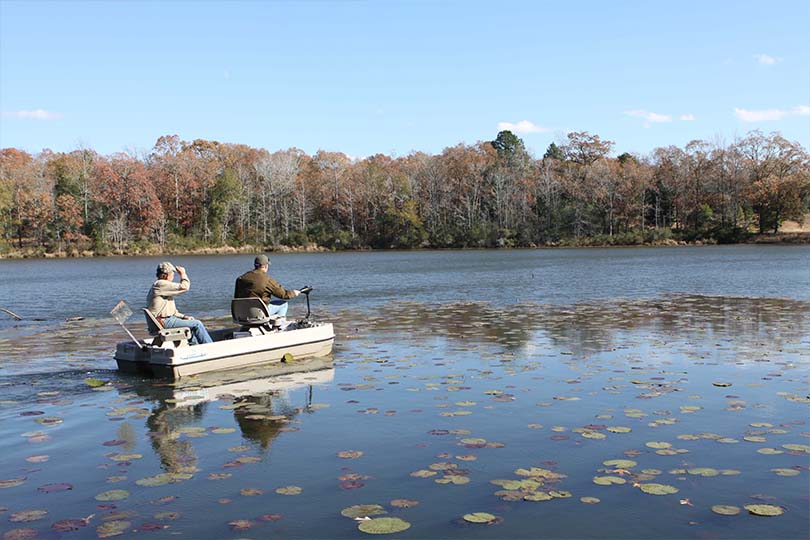As temperatures drop across Texas, winter pond management can help improve fish production in the spring, according to Dr. Billy Higginbotham, Texas A&M AgriLife Extension Service wildlife and fisheries specialist.
Increased precipitation rates in the winter can lead to many stock ponds catching new water from their watersheds.
“This can change the pond’s water chemistry, and if the pond is located on acidic soils, a water test should be conducted in January to determine agricultural limestone needs,” Higginbotham told AgriLife Today.
He recommends landowners get a water test in January to determine agricultural limestone needs.
Fish production is best with a pH level of 6.5-8.5. Lime needs to be added when the pH is below 6, and they have a total alkalinity reading of less than 20 parts per million.
Applications vary from 1-4 tons of lime per surface acre, Higginbotham said. The lime should be applied as evenly as possible over the surface using a boat or barge or dump the lime at the upper end of the pond to allow distribution by natural water flow.
Pond owners in the acid soil region of East Texas can get their county Extension agent to perform the pH and total alkalinity test.
He said application should be made between January and March to give the lime time to react prior to spring fertilization in April.
When water temperatures decline, supplemental feeding also slows greatly, according to Higginbotham. Automatic feeders should be turned off or feed measurements reduced to help prevent waste.
“The rule of thumb is to not feed if the fish are not eating,” Higginbotham said. “Switch to offering a little feed in late afternoons after several warm sunny days in a row. The fish will not feed as vigorously as they did back in September, but a little supplemental feed throughout the winter will keep the fish in good condition going into the spring growing season.”
He said overfeeding leads to wasted money and possibly a change in water chemistry as feed decomposes.
To help control aquatic weeds he said to pull samples of weed growth and have it identified by an Extension agent, fisheries biologist or consultant.
“Depending on the plant species, weed control efforts generally can be initiated in April,” Higginbotham said.
The colder season is also the best time to review catch records from 2016 to determine if the pond is moving in the right direction to achieve production goals for fishing.
“If you were unhappy with what you were catching in 2016, nothing will change in the new year unless you take the appropriate management steps to correct problems,” Higginbotham said. “Catch records cost nothing and data such as length and weight of all largemouth bass caught, as well as information on other key species such as catfish, bluegill and crappie, help chart the course for future recommendations.”


how can one get rid of an over production of mud catfish in a 28 acre pond.
Hi, Josh. It’s probably best to reach out to your local Extension agent.
If you get enough large Bass and Channel Cats, they will eat them as fast as they hatch.
Where do I get my water samples tested? I am sure not the Pool Warehouse. Please advise, Jeff